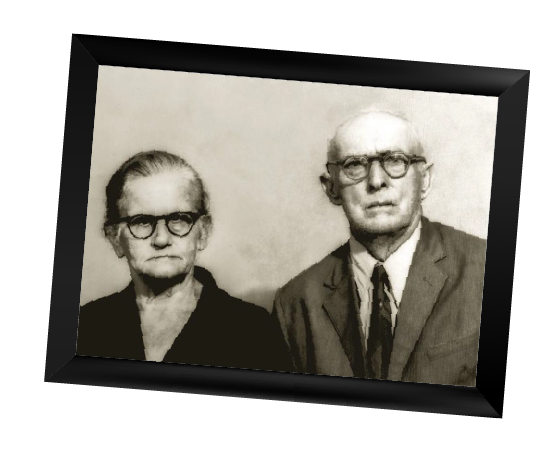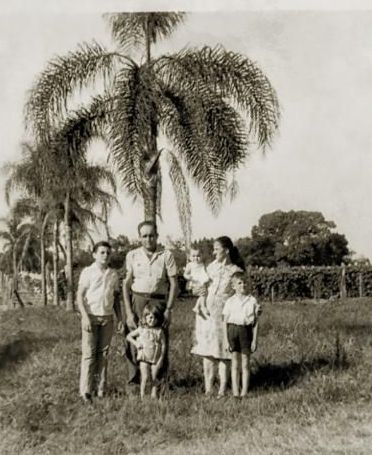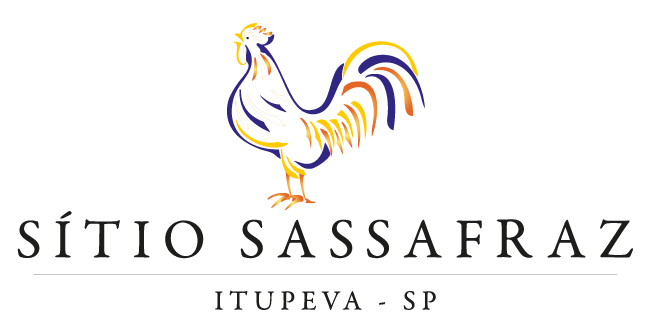History of the Sassafraz Site
The history of Sítio Sassafraz began in 1888, in Sermide, near Bologna in the Montova region of Italy. The Vanini family boarded the steamship Giava bound for Brazil in search of work. They docked at the port of Santos and were taken to the immigrant hostel in São Paulo on March 18 of the same year. The family consisted of only six people: the patriarch Tommaso Vanini (48), his wife Edvige Puga (41) and their four children, Cleonice (17), Primo (12), Vittória (09) and Enrico (06).

Upon arriving in the interior, they settled on the Bonfim farm in Cabreúva to work on the coffee plantations. After work hours, the family cultivated an onion farm. Decades later, the youngest son of the family, Enrico Vanini, already married to Leofinia Barcele, celebrated the wedding of his son, Thomaz Angelo Vanini with Emilia Muraro, where they had five children, Iris (Uncle Idi), Edilia (Aunt Dica), Antenor (Vô Nego), Ema (Aunt Ema) and José (Uncle Zé).
In 1951, Thomaz Angelo managed to buy the site!
The farm of a former lady descended from slaves, called Nhá Chica Santana, in Itupeva, a farm of approximately 21 acres where Nhá Chica cultivated medicinal plants and herbs to treat the people of the region.

At that time, the farm had no electricity or water. It was with the effort and sweat of the family that they built the entire basic structure of the property and thus dedicated themselves to the cultivation of Niagara table grapes. The farm was named Sitio Pinheirinho, due to the large plantation of pine trees in this area. Now our family was bigger, our beloved Grandpa Nego (Antenor Vanini) married Grandma Lourdes (Maria de Lourdes Falchi Vanini) and they had four children, Claudemir, Ademir, Marly and Maria Helena.
In 1981
Our beloved Pinheirinho won the Model Producer Award from DUva Niagara in the State of São Paulo. The farm had 100,000 grapevines and employed 10 families of sharecroppers, producing an average of 50,000 boxes of grapes per harvest.
After decades of hard work, planting and successful harvests, in 2005, our beloved Vô Nego passed away, and Sitio Pinheirinho was divided between his children and nephews.
The territory at the back of the Sitio was given to Vô Nego's youngest daughter, Dr. Maria Helena Vanini Polli. In addition to the native forest and grape vines, the only tree that remained from the original history of Sitio Pinheirinho was the Sassafraz tree, a typical Brazilian tree in our forests in the region, thus giving rise to the name with which it is known today: Sitio Sassafraz.
Sitio Sassafraz began as a small agro-industry opened on October 10, 2007, producing artisanal jams and selling fruits, vegetables, legumes and cheeses to tourists and local residents. In 2008, we held our first breakfast for a scheduled group of ladies from Rio de Janeiro. Since then, Sitio Sassafraz's breakfast has only grown, increasing our space and variety of dishes.
Today, in addition to our delicious breakfast, Sitio Sassafraz also hosts company gatherings, birthdays and weddings. Sitio Sassafraz also works with educational tourism and welcomes schools from the region that seek to integrate the knowledge acquired in the classroom with the external environment.

Through Rural Tourism, we are preserving a story that we are very proud to tell and we hope that people who get to know us will also take a little of this story with them!
Come have a
unique experience
at Sítio Sassafraz
Meet our
Colonial breakfast


